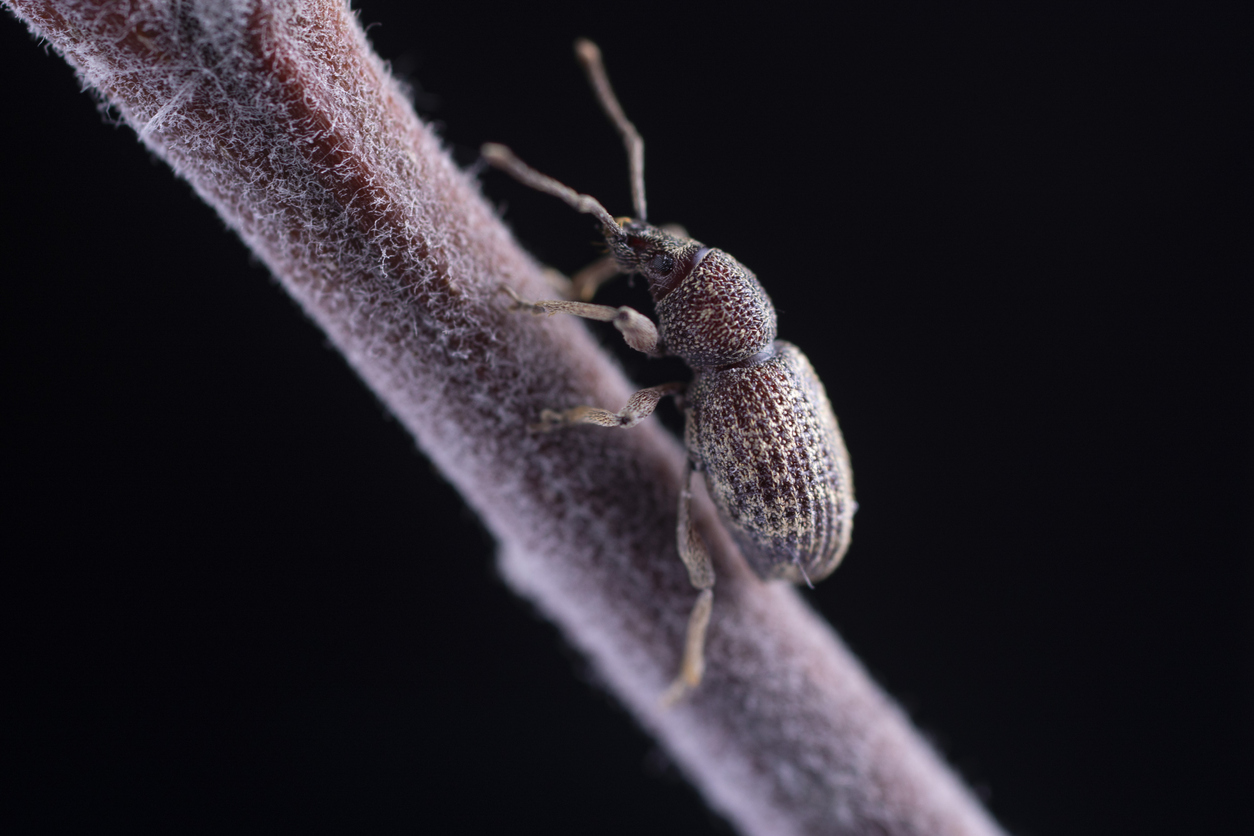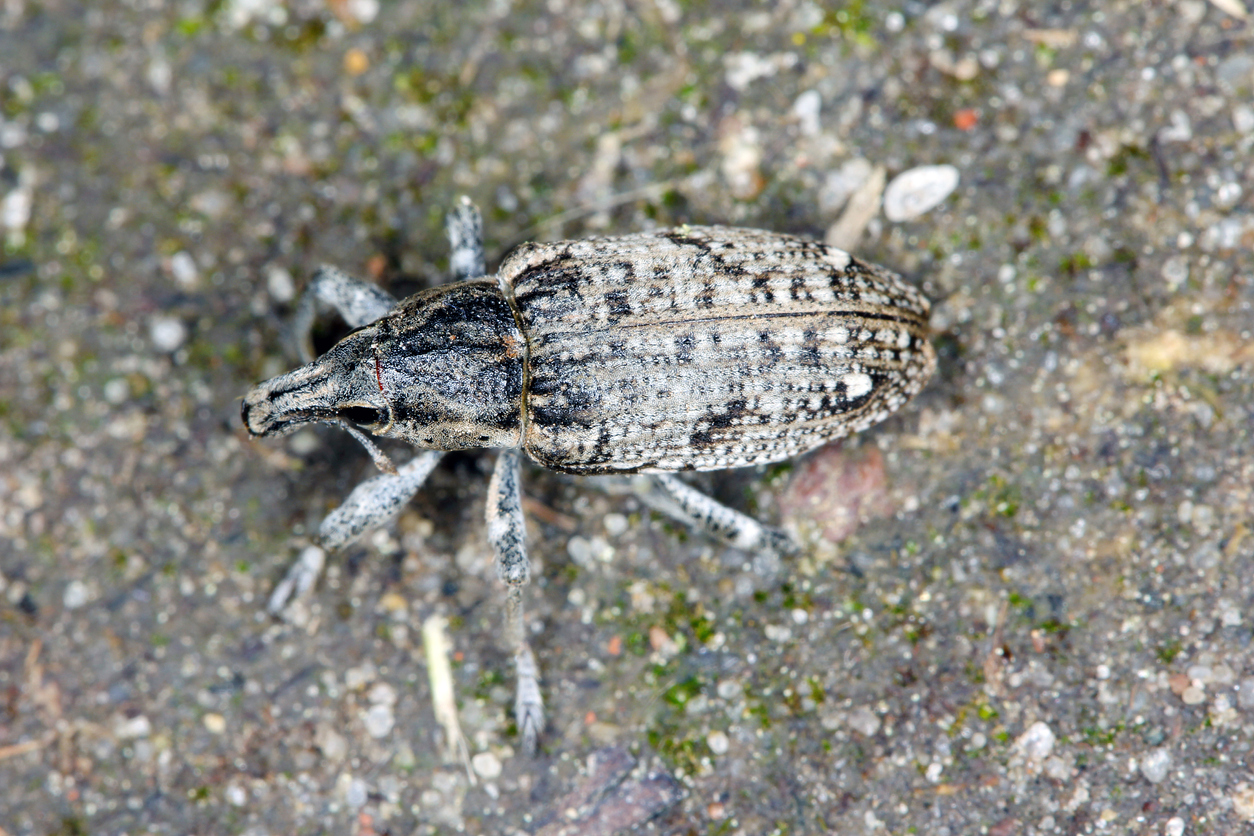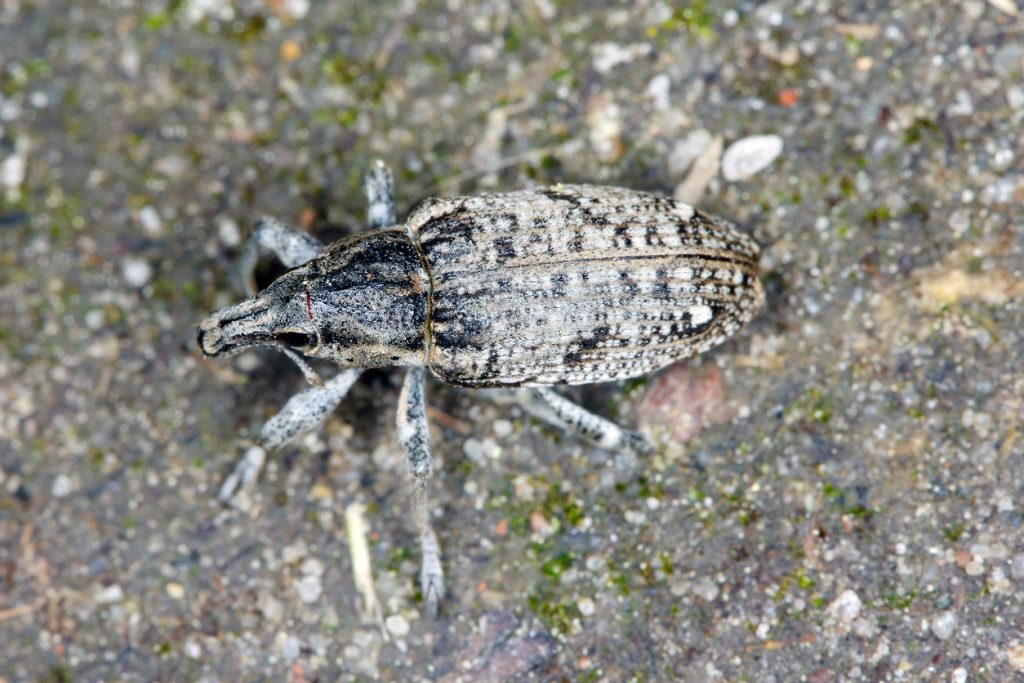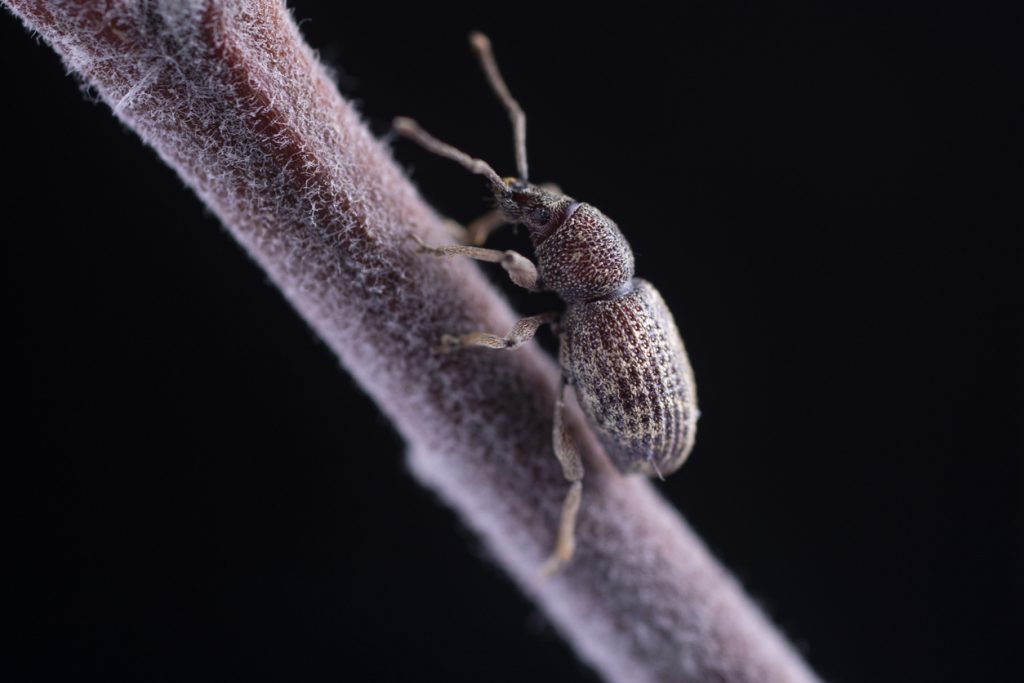Root Weevil – How To Identify And Control Root Weevils
If you thought aphids were a peril to the crops in your garden, you obviously haven’t met the root weevil. Dubbed by some as the root of all evil, these voracious insects can go through a whole veggie patch and single-handedly bring it to ruin. It’s a reputation that the root weevil does its best to cement and fortify.
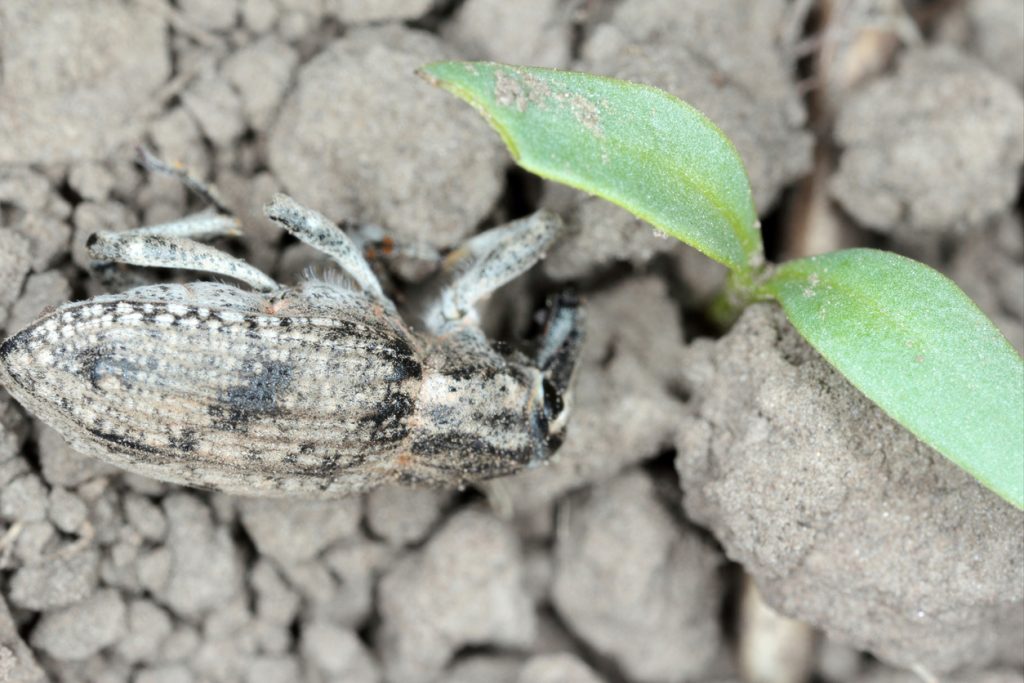
When gardeners see the signs of the dreaded weevil infestation, they usually give up and consider their flowers, crops, or vines as good as gone. But just because the root weevil has a hard shell encasing its body and a far-reaching snout doesn’t mean that it’s indestructible. Read on to find out how to control root weevils and keep their damage to a minimum.
Identify the Root Weevil
Although the root weevil is nothing more than a glorified beetle, it by far has more devastating effects on your garden than the average beetle. Weevils are smaller in size than beetles but more determined and focused. As summer pests, they spread through your garden attacking everything from veggies to flowers, shrubs, and trees.
The average root weevil measures no more than a half-inch in length. It’s not easy to miss with its hard body, triangular-shaped head with a long snout sticking out of it, and crooked antennas. Unlike beetles, weevils have an antenna with a joint at the middle that looks like an elbow. The body is either black or brown, and despite the leathery wings, the insect cannot fly or run. It is a slow mover that crawls from one leaf to the next, slowly munching and laying eggs where it feeds.
Generally speaking, root weevils attack any plant as long as it has sap flowing through it. From trees and shrubs to vines, flowers, and vegetables, every live plant is on the weevil’s menu. They feast on grapes and blueberries with the same gluttony as attacking laurels, rhododendrons, and hemlocks. This is what makes it one of the most devastating pests in any garden. No vine or tree, no matter how high, is beyond its reach.
Symptoms of Root Weevil Infestation
Besides attacking growing plants, some weevils put their strong jaws to good use and attack grain storage facilities causing millions of dollars in damage in their wake. That’s why you should identify the symptoms of a root weevil infestation as early as possible. This could be the difference between a healthy garden and one that’s left in ruins. Here are some of the symptoms you would encounter.
- Wilted Stalks: This is usually the result of the weevil larvae attacking the roots of the plants. As soon as they hatch, the larvae start feeding on the roots around them. This causes considerable damage to the plants, which start to wilt due to the lack of nutrition and water absorbed by the roots. If the larvae continue to feed on the roots, in case of large infestations, the plants will most likely die before the larvae are done with them.
- Girdling: When the larvae mature, it leaves the soil and roots and moves up the stalk of the plant. Along the way, they don’t stop feeding. They puncture the stem of the plant to reach the sap in the veins. This further interrupts the supply of nutrients from the roots to the leaves and flowers. By the time the weevils are ready for the next phase of their life cycle, the plant which has hosted them is reduced to a husk.
- Notched Leaves: Finally, the root weevil makes its way to the upper parts of the plant. Its goal is to reach the young shoots and flowers at the top. They munch their way to the leaves and leave small notches in the leaves. These punctures are easy to identify, but as we have seen, this stage is the end rather than the beginning of the weevil’s trail of destruction.
Weevil Varieties
Although they might look the same to the untrained eye, weevils come in different varieties. Some, like the strawberry root weevil only attack strawberries and raspberries. Other weevil species don’t make such a distinction and go after any plant that comes their way. Here are some of the most common weevil species that you might encounter.
- Rose Weevil (Merhynchites bicolor): This small weevil is the bane of every flowering plant in your garden. Rather than feed on the sap in the leaves and stems, the rose weevil drains the juices out of the petal of the flower. They don’t attack just roses, but even the flowers of vegetable plants. Without pollinated flowers, the veggies won’t fruit that year.
- Wheat Weevil (Sitophilus granarius): Known in the agricultural circles as the granary weevil, this dreaded weevil causes destruction wherever it goes. If you don’t manage to prevent it from reaching the grain storage unit, there’s little chance you’ll have any grains left. When facing danger, these weevils play dead.
- Flour Weevil: Although more of a beetle than a weevil, the damage this metallic-red insect causes to food stock is immense. It lacks the strong jaws and snout that distinguish its namesake species, thus making it unable to feed on whole grains. Yet, it feeds on flour with the same intensity and malintent as other weevils.
- Black Vine Weevil (Otiorhynchus sulcatus): They’re either brown or gray with smaller snouts and spotted wings. They still have the elbowed antennae as root weevils. Although their damage is limited to the foliage of the plants, they can be quite tricky to control. They don’t have natural predators and, thanks to their small size, find it easy to hide in any tiny hole in the ground.
The Life Cycle of a Root Weevil
Since root weevils feed on different parts of the plants at various stages of their life, it’s important to understand the life cycle of the root weevil. That helps you know where the threat to your garden is coming from and meet it with the adequate control method.
The life of the weevils starts in the spring when the eggs laid by the adults hatch near the base of the plants. Immediately the larvae start burrowing in the soil in search of roots to feed on. This is usually the most destructive part of the root weevil’s life. The larvae will go undetected until they emerge from underground. During that time, they keep pruning the roots of the plants, which impacts the plants’ growth and health.
By May or early June, the mature root weevil breaches the surface of the soil. If the weather is too hot, the weevil will migrate to the house, where it will cause more than just a nuisance with its bites and food damage. But most often, the weevil will just keep climbing up the nearby plants as it moves toward the top for the young shoots and flowers.
How to Control Root Weevils
As we have seen, the root weevil has a lot going for it. It starts its life underground away from the prying eyes and the few natural predators it has. And by the time it emerges from the ground, it’s fully grown with a hard shell to protect it. That leaves you with two options as far as controlling this pest is concerned—either organic methods or chemical pesticides.
Organic Control
This is usually the best eco-friendly solution to combat the threat of the root weevil. However, it also involves a lot of work on your part. The good news is, it is quite effective, and if you combine more than one of the following options, you’ll keep your garden and home safe.
- Manual Control: This method is not for the faint of heart. It involves picking the weevils by hand off the plants, trees, or shrubs. You’ll need to do it at night when the weevils are active. Use a flashlight to send the insects running out of their hiding places between the leaves. If that doesn’t work, give the plant or vine a vigorous shake. The weevils will drop to the ground. Pick them up and drop them in a bucket full of water and wash detergent to kill them.
- Polyethylene Tape: A low-tech but efficient way to prevent weevils from crawling up the stems of the plants. Wrap a waterproof sticky tape around the stalk of the plant. When the root weevils try to climb over it, they will get stuck. The dead weevils will serve as a strong warning to other mature weevils and prevent them from getting near to the plant.
- Entomopathogenic Nematodes: These roundworms are some of the few natural predators of root weevil larvae. Small, round, and with unsegmented bodies, they infuse the soil with lethal bacteria that kill the weevil larvae without delay. Use this method when you discover the damage to the roots of the plants caused by the larvae.
Chemical Control
As with all chemical pesticides, there’s an element of risk not just to the other plants in the garden but to the pets and children as well. The toxins in these products could be absorbed by your veggie plants and find their way into the food you harvest.
Most commercial pesticides that work against root weevils have active ingredients such as bendiocarb, acephate, bifenthrin, and chlorpyrifos. However, some of these chemicals are not allowed in certain states. So check the local laws in your state before you purchase a pesticide online.
Tips for Controlling the Root Weevil
As complex as controlling the root weevil is, it pays to be vigilant and stop those destructive beetles in their tracks before they find an opening in the defenses you set up around the garden. Here are a few tips to help you along the way.
- Get rid of mulch if you see any of the weevil infestation symptoms we listed above. Mulch keeps the soil moist and serves as a hiding place for the weevils and their larvae.
- Diatomaceous Earth is one of the best organic methods to inflict as much damage on the weevils as you can. It doesn’t change the chemical composition of the soil, nor does it have any negative effects on the plants.
- Try to keep the soil as dry as possible. Don’t over-water the plants to keep moisture levels low. Weevils seek moist soil to lay their eggs.
- Improve the drainage of the soil to make it more difficult for the root weevils to survive.
- Keep your garden clean and clutter-free at all times. The debris and fallen leaves serve as a hiding ground for the weevils.
- Use a vacuum cleaner to keep your home tidy as well. They will suck the weevils out of their hiding places inside your house.
